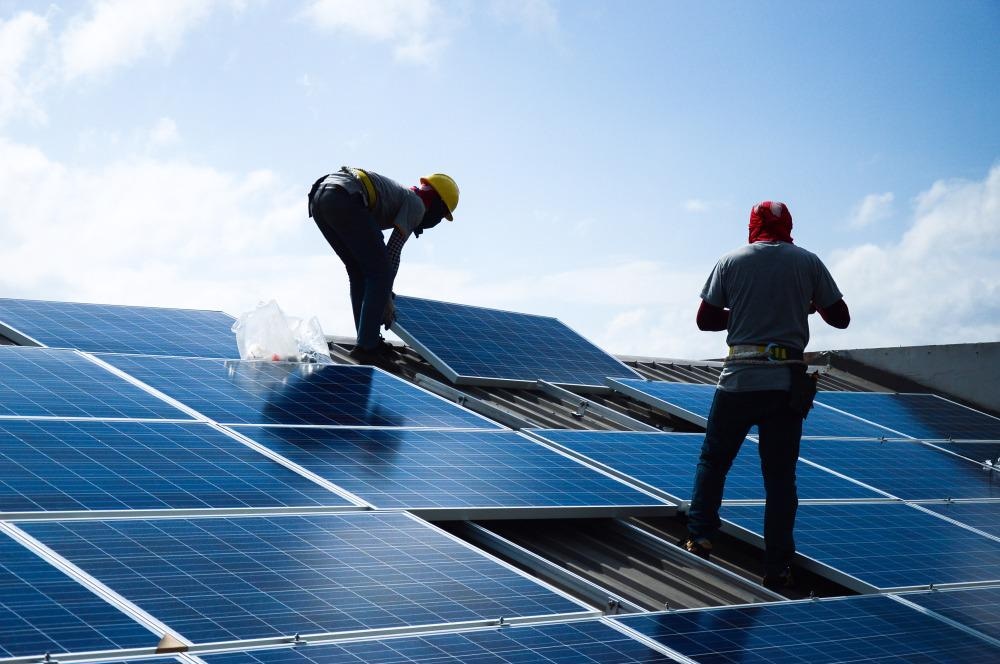Perovskite solar cells are a research focus in renewable energy generation currently. Research published in the journal Chinese Physics B has explored rare-earth elements and their application for this new generation of photovoltaic solar cells.

Study: The Applications and Functions of Rare-Earth Ions in Perovskite Solar Cells. Image Credit: surasak jailak/Shutterstock.com
Perovskite Solar Cells
Perovskite solar cells have advantages over current solar cell technology. They have the potential to be more efficient, are lightweight, and cost less than other variants. In a perovskite solar cell, the layer of perovskite is sandwiched between a transparent electrode at the front and a reflective electrode at the back of the cell.
Electrode transport and hole transport layers are inserted between cathode and anode interfaces, which facilitates charge collection at the electrodes.
There are four classifications of perovskite solar cells based on morphology structure and layer sequence of the charge transport layer: regular planar, inverted planar, regular mesoporous, and inverted mesoporous structures.
However, several drawbacks exist with the technology. Light, moisture, and oxygen can induce their degradation, their absorption can be mismatched, and they also have issues with non-radiative charge recombination. Perovskites can be corroded by liquid electrolytes, leading to stability issues.
To realize their practical applications, improvements must be made in their power conversion efficiency and operational stability. However, recent advances in technology have led to perovskite solar cells with a 25.5% efficiency, which means that they are not far behind conventional silicon photovoltaic solar cells.
To this end, rare-earth elements have been explored for applications in perovskite solar cells. They possess photophysical properties that overcome the problems. Using them in perovskite solar cells will therefore improve their properties, making them more viable for large-scale implementation for clean energy solutions.
How Rare Earth Elements Aid Perovskite Solar Cells
There are many advantageous properties that rare earth elements possess that can be used to improve the function of this new generation of solar cells. Firstly, oxidation and reduction potentials in rare-earth ions are reversible, reducing the target material’s own oxidation and reduction. Additionally, the thin-film formation can be regulated by the addition of these elements by coupling them with both perovskites and charge transport metal oxides.
Towards a Reliable and Cost-Effective 100% US Renewable Energy Grid
Furthermore, phase structure and optoelectronic properties can be adjusted by substitutionally embedding them into the crystal lattice. Defect passivation can be successfully achieved by embedding them into the target material either interstitially at the grain boundaries or on the material’s surface.
Moreover, infrared and ultraviolet photons can be converted into perovskite-responsive visible light owing to the presence of numerous energetic transition orbits in the rare-earth ions.
The advantages of this are twofold: it avoids the perovskites becoming damaged by high-intensity light and extends the material’s spectral response range. Using rare earth elements significantly improves the stability and efficiency of perovskite solar cells.
Modifying Morphologies of Thin Films
As mentioned previously, rare earth elements can modify the morphologies of thin films consisting of metal oxides. It is well-documented that the morphology of the underlying charge transport layer influences the morphology of the perovskite layer and its contact with the charge transport layer.
For example, doping with rare-earth ions prevents aggregation of SnO2 nanoparticles that can cause structural defects, and also mitigates the formation of large NiOx crystals, creating a uniform and compact layer of crystals. Thus, thin layer films of these substances without defects can be achieved with rare-earth doping.
Lead-Adsorbing Ionogel to Minimize Lead Leakage from Perovskites Solar Cells
Additionally, the scaffold layer in perovskite cells that have a mesoporous structure plays an important role in the contacts between the perovskite and charge transport layers in the solar cells. The nanoparticles in these structures can display morphological defects and numerous grain boundaries.
This leads to adverse and serious non-radiative charge recombination. Pore filling is also an issue. Doping with rare-earth ions regulates the scaffold growth and reduces defects, creating aligned and uniform nanostructures.
By providing improvements for the morphological structure of perovskite and charge transport layers, rare earth ions can improve the overall performance and stability of perovskite solar cells, making them more suitable for large-scale commercial applications.
The Future
The importance of perovskite solar cells cannot be understated. They will provide superior energy generation capacity for a much lower cost than current silicon-based solar cells on the market. The study has demonstrated that doping perovskite with rare-earth ions improves its properties, leading to improvements in efficiency and stability. This means that perovskite solar cells with improved performance are one step closer to becoming a reality.
Further Reading
Cang, L et al. (2021) The Applications and Functions of Rare-Earth Ions in Perovskite Solar Cells [online] Chinese Physics B | iopscience.com. Available at: https://iopscience.iop.org/article/10.1088/1674-1056/ac373a/met
Disclaimer: The views expressed here are those of the author expressed in their private capacity and do not necessarily represent the views of AZoM.com Limited T/A AZoNetwork the owner and operator of this website. This disclaimer forms part of the Terms and conditions of use of this website.